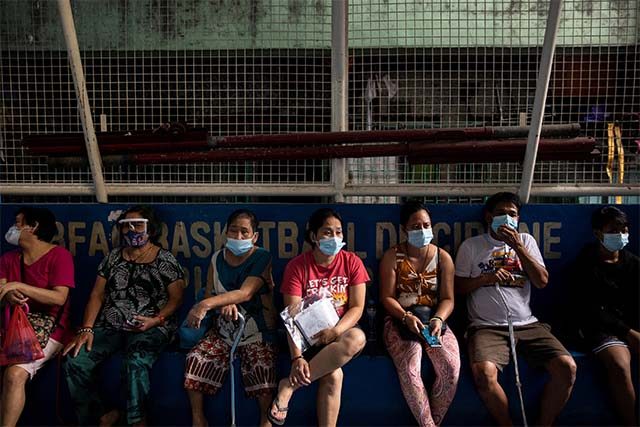
What happened to the assignment of the Inter-Agency Task Force for the Management of Emerging Infectious Diseases (IATF-EID) members to local government units?
This was the question raised by some social media users who are seeking for an update on the IATF-EID and LGU partnership during the modified enhanced community quarantine which ran from Aug. 4 to 18, 2020.
In a resolution on August 12 last year, the members of IATF-EID were assigned to provide stronger support to the LGUs with areas identified with high community transmission in as much as “to strictly monitor health system performance, critical care capacity, and stringent compliance to surveillance, isolation and treatment protocols.”
Such measure also earned its share of criticisms back then. Some Filipinos argued that health workers and medical professionals should be the ones to guide local executives rather instead of Cabinet members.
Palace later defended the IATF-EID assignment.
“We understand the concerns of certain quarters to have health experts guide local government units in the execution of their plans. We, however, have to stress that public health officers and health experts are one part of the whole-of-government approach,” Presidential spokesperson Harry Roque said.
“The assignment of Inter-Agency Task Force members to LGUs, we reiterate, is to ensure close coordination between the national government and LGUs and to harmonize the policies being crafted by the IATF and the operational framework that is being implemented on the ground,” he added.
The Palace official furthered that the national government has “to ensure that the operational aspect of the National Action Plan against COVID-19 will be properly implemented down to the barangays.”
The MECQ was re-imposed over the Greater Manila Area (National Capital Region, Laguna, Cavite, Rizal, and Bulacan) for two weeks after local medical organizations appealed for time-out in August due to then surge in COVID-19 cases.
The country was then dealing with 106,330 COVID-19 cases, which pales in comparison to the current 803,398, as of April 5.
What happened?
Humor blogger and critic “Professional Heckler” was among the Filipino online users who asked for an update about the IATF-EID assignment.
The blogger shared a screenshot of a graphic showing the Greater Manila Area map, IATF-EID members and which areas they are assigned.
“Ano palang nangyari rito?” the tweet read.
Ano palang nangyari rito? pic.twitter.com/adOXnfeQjH
— The Professional Heckler™️ (@hecklerforever8) April 3, 2021
Some online users responded and expressed their frustration over how ineffective the assignment was given the worsening situation in Greater Manila Area.
Greater Manila Area, also called “NCR Plus,” is now on its second week of re-imposed enhanced community quarantine. The stricter ECQ which was reimplemented March 29 will last until April 11, unless extended.
The ECQ was re-implemented after these areas saw increases in COVID-19 cases amid the presence of COVID-19 variants.
“IATF Chairperson is Duque. His co-chair is Nograles. Sa Quezon City sila nakaassign. And guess what, Quezon City is consistent in having the highest recorded daily cases in Metro Manila. That says it all,” one user said.
“All IATF members who fail at their assignments should not receive compensation for their kaCZARotan,” another user wrote.
Others pointed out that Danilo Lim, who was in-charge of Pateros, had passed away last January.
It is not clear whether the IATF assignment is still in effect.
IATF members Roque and Tourism Secretary Bernadette Romulo-Puyat has yet to respond to Interaksyon’s request for comment regarding the LGU assignment.









